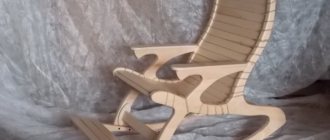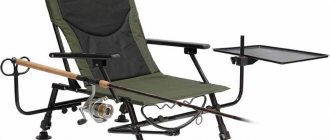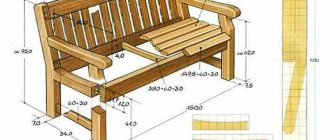13148
Replacing upholstery is a budget-friendly way to update upholstered furniture. It is the fabric that first loses its attractive appearance, while the frame is still strong and can serve for many years. If you wish, you can do the work yourself. It is worth carefully studying the information on how to reupholster a chair with your own hands step by step, so that the effort expended is justified, and the product begins to look like new. The algorithm is simple and requires only strict adherence to consistency and accuracy.
Main features of restoring an old chair
The process of restoring damaged furniture is not a partial restoration of parts or replacement of upholstery, it is giving a new look to an old chair, an opportunity to refresh the interior. Rework is carried out when the legs are wobbly, the upholstery is worn out, springs are sticking out, or the structure is loose.
The peculiarity of the restoration process is that it is quite difficult to do it yourself, so this matter is entrusted to professionals.
You can partially remake and restore upholstered furniture yourself:
- dismantle the upholstery;
- make a constriction;
- legs are repaired or replaced.
You can restore the chair completely or partially repair it.
It’s worth trying to restore furniture with your own hands if you have enough experience in furniture repair or if you don’t have enough money for quality material.
The only downside to restoration is the lack of professionalism in restoration work.
Advantages of restoration at home:
- cost savings;
- the value of the interior item increases;
- the interior is refreshed.
Choice of upholstery fabric
Self-upholstery will help restore the product's attractiveness and save money. A standard chair becomes unique and designer. If you organize the process correctly, the entire work will take no more than one day. Restoration is necessary in certain situations:
- the filler has already changed shape;
- depressions appeared in the seat and back;
- there are stains or damage on the upholstery;
- The product does not match the style of the room.
First of all, reupholstering old chairs is needed to change the type of piece of furniture. The leading role is played by upholstery fabric. It must be durable, wear-resistant, and retain consumer qualities for a long time. The fabric must also keep its shape well, be cleaned of dirt, be dense and tear-resistant.
To re-tighten a product you do not need to have any special skills or experience, just follow the instructions carefully.
You can restore an old chair using any textile, leather, denim, flock, velor and other materials. If there are cats in the house, select raw materials that do not form snags on the surface (flock). For the children's room, where the risk of potential contamination is high, soft fabrics that are resistant to cleaning and abrasion (chenille, matting) are selected.
In the living room, more attractive options made of nubuck, tapestry, leather, and jacquard are appropriate. If there is a lot of smoking in the room, you should give preference to fabrics that do not absorb odor. The latter include chenille. An additional advantage of the upholstery will be moisture-repellent properties, Teflon or acrylic impregnation. The denser the product, the longer it will retain its original appearance.
Modifications and features of the Poeng chair from Ikea, the pros and cons of the product
Flock
Chenille
Velours
Microfiber
Tapestry
Jacquard
Leather
Required materials and tools
First you need to select a set of tools and materials.
You can use a standard set of tools, and a set of brushes and paints for a painter. Unavailable tools are purchased according to the recommendations of the master, so as not to damage the parts during work. Pure wood furniture is sensitive to floors and can dry out.
First you need to select a set of tools and materials or ask a specialist to select the necessary
Required materials and tools:
- chisel, spatula;
- hammer, screwdriver;
- stationery knife, wood glue;
- set of brushes, roller;
- acrylic paints, water-repellent varnish;
- sanding machine, foam rubber;
- stapler, sandpaper, new springs;
- screwdriver, awl, large needles with silk threads.
What components may be needed?
When restoring office chairs or models with movable wheels, casters or crosspieces are needed. To avoid damaging the surface of the laminate or parquet, purchase sets of rollers with mechanical locking.
For the office version, restoration requires replacement of the crosspiece with gas cartridge.
For the office version, restoration requires replacement of the crosspiece with gas cartridge
Original ideas on how to update an old Soviet chair
After sheathing, and before it:
After sheathing and before it
Another update option:
Another update option
Complete renovation:
Complete office chair renovation
A master can update the chair more efficiently, but it is possible to restore it yourself. It is necessary to choose high-quality upholstery material. Restore the appearance of furniture to match the interior of the room. Then there will be no need to purchase new furniture.
Stages of work
Upholstering the product at home is not difficult. The whole process comes down to disassembly, fabric cutting, trimming and assembly. Even novice masters can do it in a day. Recommendations will simplify the process.
If the design of the chair is too complex, it is useful to watch the rules for disassembling the product in the video instructions.
Step-by-step instructions are a complete guide to action. Before starting work, you should read it to the end, then organize your tools. After completion of the work, the product can be decorated to your liking.
The procedure for making a rocking chair from different materials with your own hands
Disassembling the product
Before upholstering an old chair, you need to disassemble it into separate parts. If you have no experience in assembling such models, it is recommended to record the process on paper or in the form of a photo report. Then there will be no problems with assembly at the final stage. Disassembly comes down to the following algorithm:
- dismantle all decorative elements;
- turn the product over, remove the legs;
- remove the fasteners, unscrew the screws and take out the nails;
- pull out old staples;
- remove the bottom.
Unscrew all parts of the structure gradually. The fabric is carefully removed so that it serves as a pattern for new upholstery. Self-upholstery can become part of restoration work. At this stage, you can replace rotten, damaged parts, and repair damaged areas.
A good filler can be left untouched, but a deformed one will have to be dismantled. Use a flat-head screwdriver to remove the staples and remove the foam. If it is glued, carefully cut it off in layers. All garbage and unusable material are sorted into bags so as not to litter the workspace.
Before continuing work, the product is cleaned of dust and damaged fittings are replaced. If necessary, cover the structure with protective compounds.
If you have to reupholster an office chair, the procedure does not change. Initially, all parts and decor are removed, the back and bottom are dismantled. Remove the upholstery and take out the filling. The only difference is in the design.
Cutting fabric
Replacing an old canvas with a new one involves preliminary cutting. You can transform the product with flock, jacquard, tapestry, leather, nubuck, chenille. The cutting method does not change depending on the type of material. A pattern can be created in two ways: tracing the old version, creating it from scratch by taking measurements. The first method eliminates the possibility of error. The process boils down to the following steps:
- Preparation. The old upholstery is ironed and laid out on a flat surface. For convenience, you can mark which part belongs to what.
- Open it up. Place the pieces on the new fabric, trace, and mark the hem allowance. It is advisable to overlock or hem the edges. This will extend the life of the upholstery. Cut out the details with tailor's scissors.
- Fitting. Place the parts on the chair, fold the edges for a hem, and check for correctness.
- Making adjustments. Cut off excess if necessary, add darts if the shape of the product is complex.
Step-by-step making of a chair with your own hands, recommendations for beginners
You can also cut the foam rubber yourself to the shape of the old filler. Otherwise, the structural parts are cut to shape, leaving a few centimeters for fastening. An important condition is observed - upholstery fitting is carried out only on a structure with a filler.
Reupholstery and assembly
When all the decorative elements are updated, the parts are cut out, you can start reupholstering. Dust is removed from the structure and parts are prepared for assembly. Step-by-step instructions will tell you how to reupholster a chair with your own hands:
- foam rubber is applied and secured to the inside of the backrest;
- cut off the corners of the filler to make the corners smooth;
- apply batting and fix it with a stapler;
- stretch the materials so that there are no folds or distortions;
- apply the fabric and fasten it with a stapler;
- repeat the sequence of actions with the armrests and seat;
- attach the lower part and secure it.
Once the seats, armrests and backrest are reupholstered and the bottom panel is screwed down, you can put the updated decorative elements back in place. It is more difficult to work with the upholstery of leather chairs, since the leather has to be constantly stretched, preventing the formation of voids, folds, and distortion.
Reupholstering a chair is a simple step-by-step process that even a beginner can do. The main thing is to stock up on tools, choose the right fabric for upholstery and follow the instructions. It is useful to record all stages of disassembly so that there are no problems during assembly.











